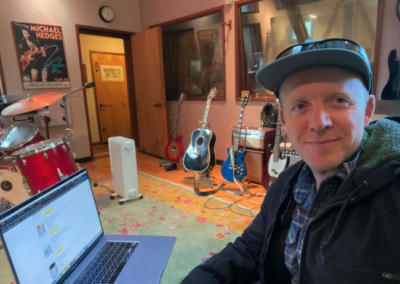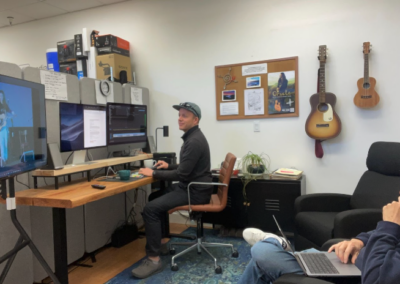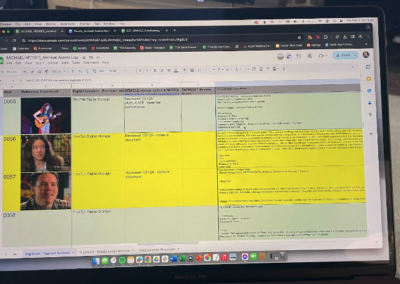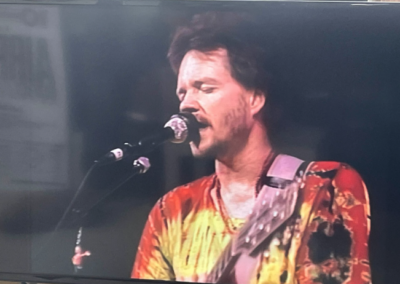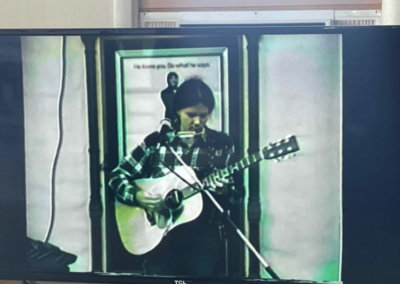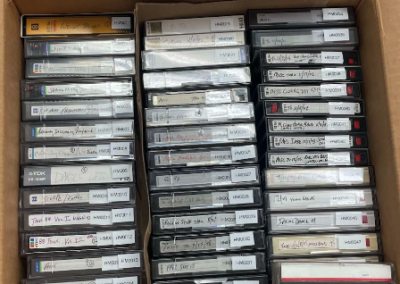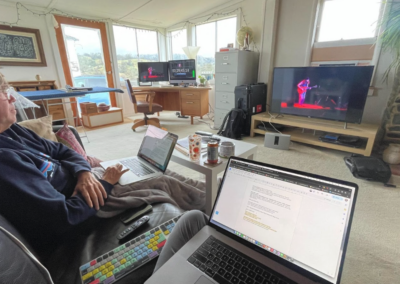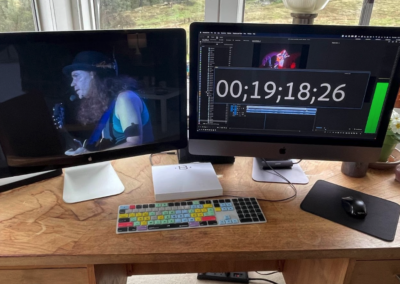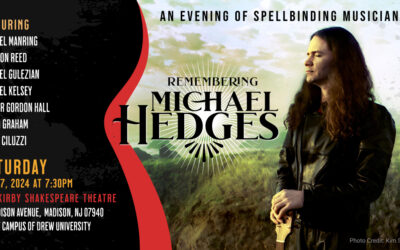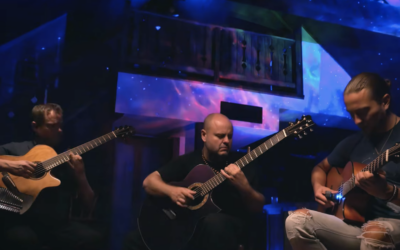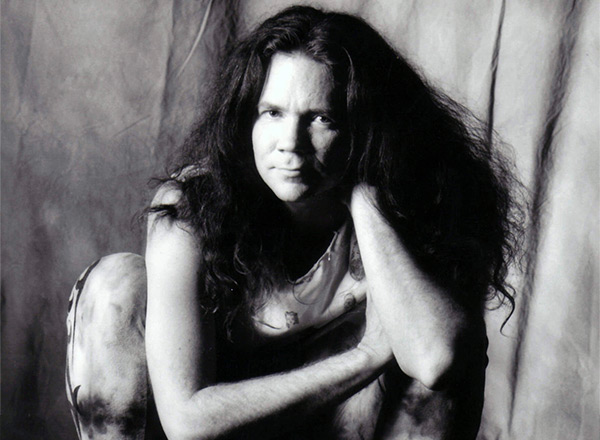By Mischa Hedges, Michael’s son
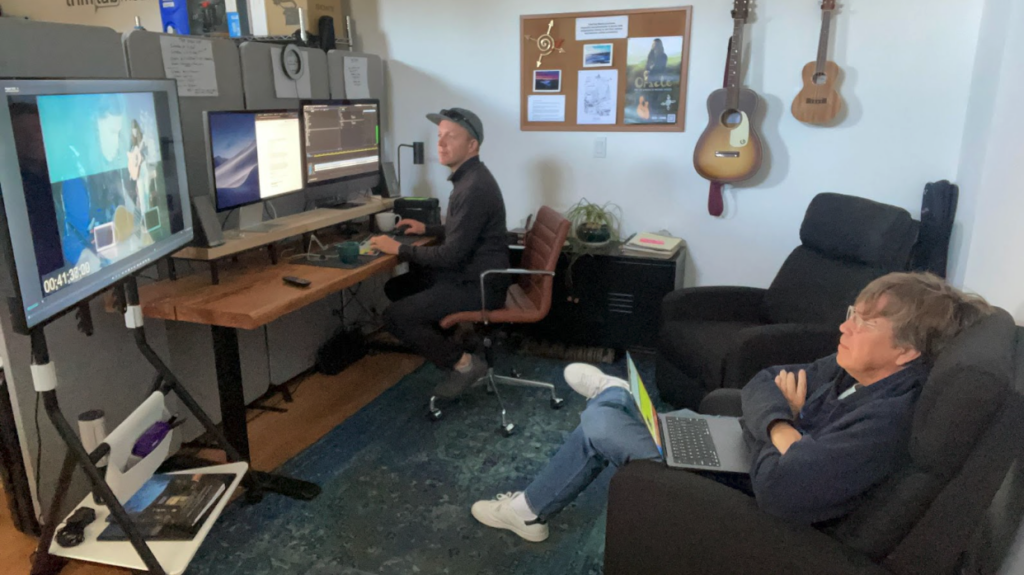
Many documentary filmmakers wait until they’re done with production before starting to edit their films. Others like to edit as they go, watching and working with shot footage while they’re still filming the story. From the start, we knew we wanted to do as much editing as possible while we filmed ORACLE. Why?
First, we wanted to see how the story was coming together and to identify “holes” that needed filling before production was complete. We also knew we’d be raising funds for this project in several stages, and that having scenes edited together to accompany our fundraising materials would be critical in demonstrating our progress and vision to potential funders.
Another reason? Production is a TON of work (we said it’s a marathon, didn’t we?), requiring lots of meetings, planning, pre-interviews, travel, many 10-14 hour days filming on location and in-studio. It’s easy to get burned out during production, and so it’s really nice to have some weeks/months at home to work on editing between production dates.
We also wanted to be as efficient as possible in bringing this long-anticipated project to the screen. Many documentaries take a year or two to film – then another year or two to edit, and even longer to have their film festival runs before broadcast and availability on streaming services like AmazonPrime, AppleTV, etc. Documentaries often take 5-10 years to finish, and we really don’t want to make you wait that long! Editing as we go condenses the process – so there’s not as much to do after finishing production.
We’re determined that this project won’t take longer than 3-4 years to complete. So long as we’re able to stay funded and remain on track with production, we’re hoping to finish editing this film by early 2025, and premiere it later that year.
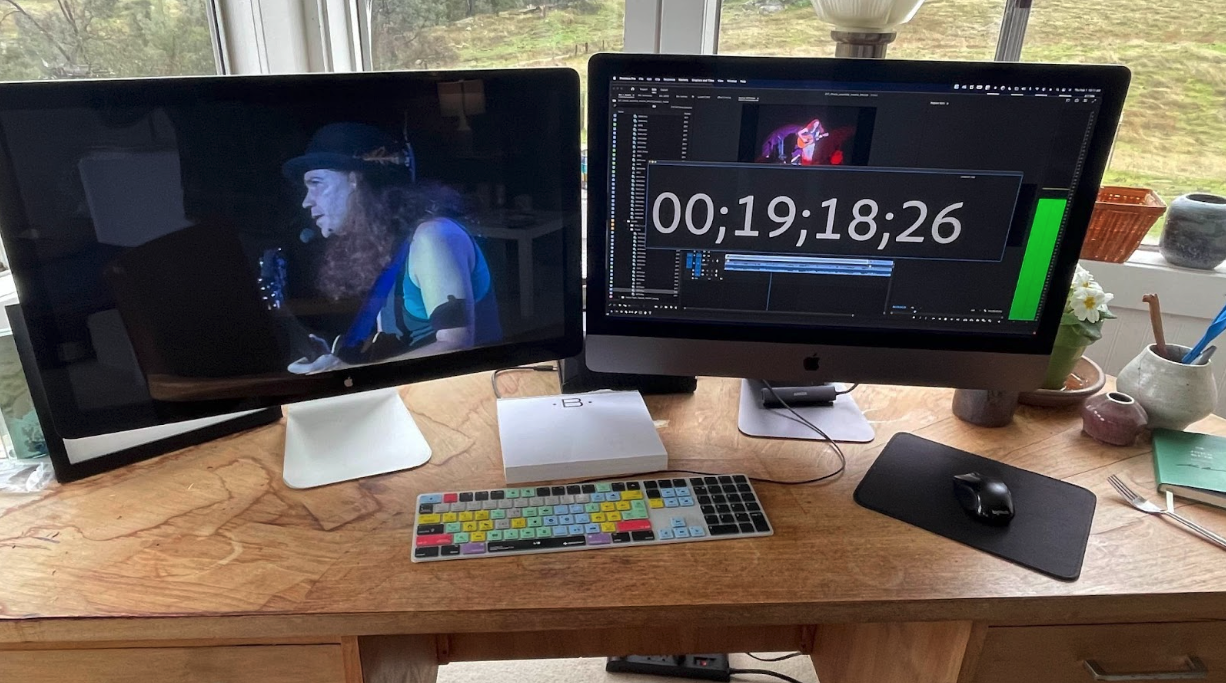
What the editing process looks like…
After the first 6 production days last June, we spent a month prepping, syncing and assembling all of our dailies – to see what was working, what wasn’t, and make some course corrections.
Each interview is being filmed with 3 cameras – a wide shot, closeup, and a reverse angle on Brendan and I, so we start by syncing those up with the audio, which is being recorded separately by our location sound recordist. Then, we send the interview out for transcripts so we can easily search keywords and highlight selects from each interview. through again.
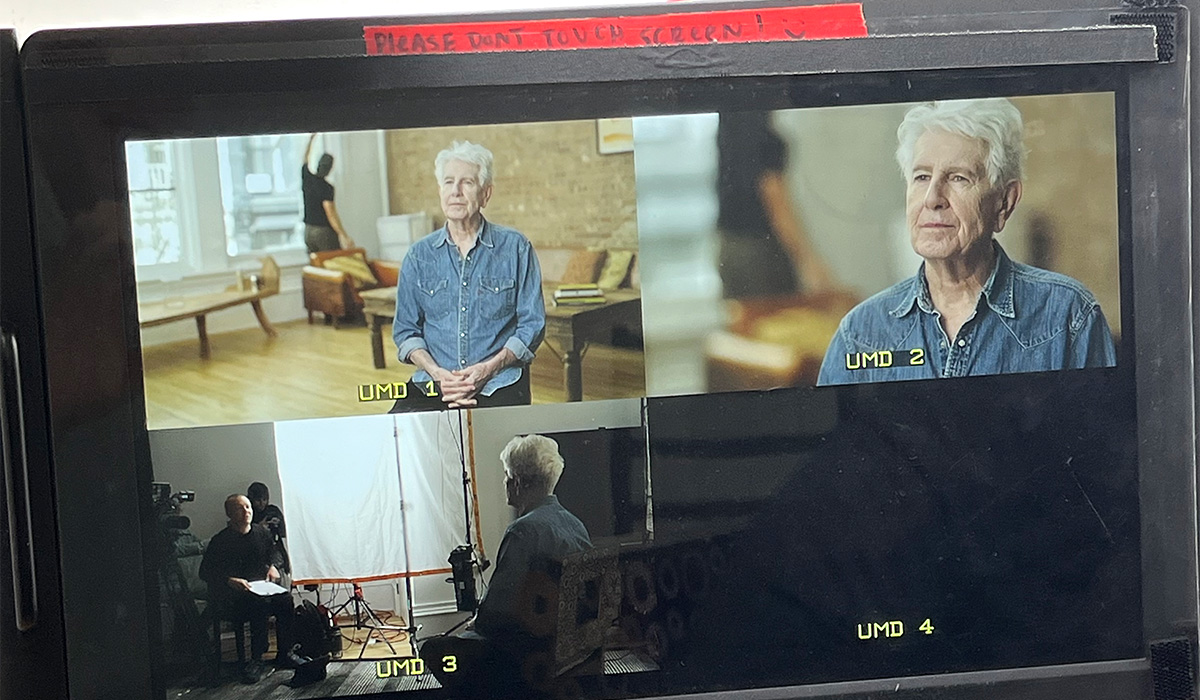
After a batch of interviews has been filmed for a storyline, we watch each interview and label the segments that it may be used in. We’ll then build a sequence for each topic, scene or time period, and bring all of the interviews into that sequence as a master assembly, for editing.
We’ll then copy that sequence, and start whittling it down, little by little, cutting “the fat” and getting down to the material that we think will be best used in a particular scene. We’ve gotten most of the way through that process for our segment entitled “The Early Days” – which starts at the beginning, and goes through Michael’s time at Peabody Conservatory of Music, before he was discovered and signed to the Windham Hill label in Palo Alto.
That “Act” of the film is divided up into 10 segments made up of individual scenes, each of which includes multiple interviews. Before editing, each of those segments had between 45-80 minutes of usable material. Multiply that by 10, and that’s 450-800 minutes of usable material, for one act of the film which will end up being about 30 minutes long! As we whittle each segment down, we aim to get them to 30 minutes each, then 15, then about 5-10 minutes per scene.
Once we’re there, we’ll assemble the first ROUGH CUT of “the Early Days” segment, which will likely be about 3 times as long as it needs to be for the finished film. We’ll keep cutting, trying things out, seeing what works best, until the segment runs about 30 minutes long.
While it’s certainly time-consuming, I find editing one of the most creative parts of the filmmaking process. Documentaries are literally “written” in the editing room. As we explore all possibilities for how a scene can play out, we rule out what won’t work, decide what is serving the storyline best, and move the scene in that direction. If, later, we decide something is missing, and we want to go back to the original material, it’s all right there to go through again.
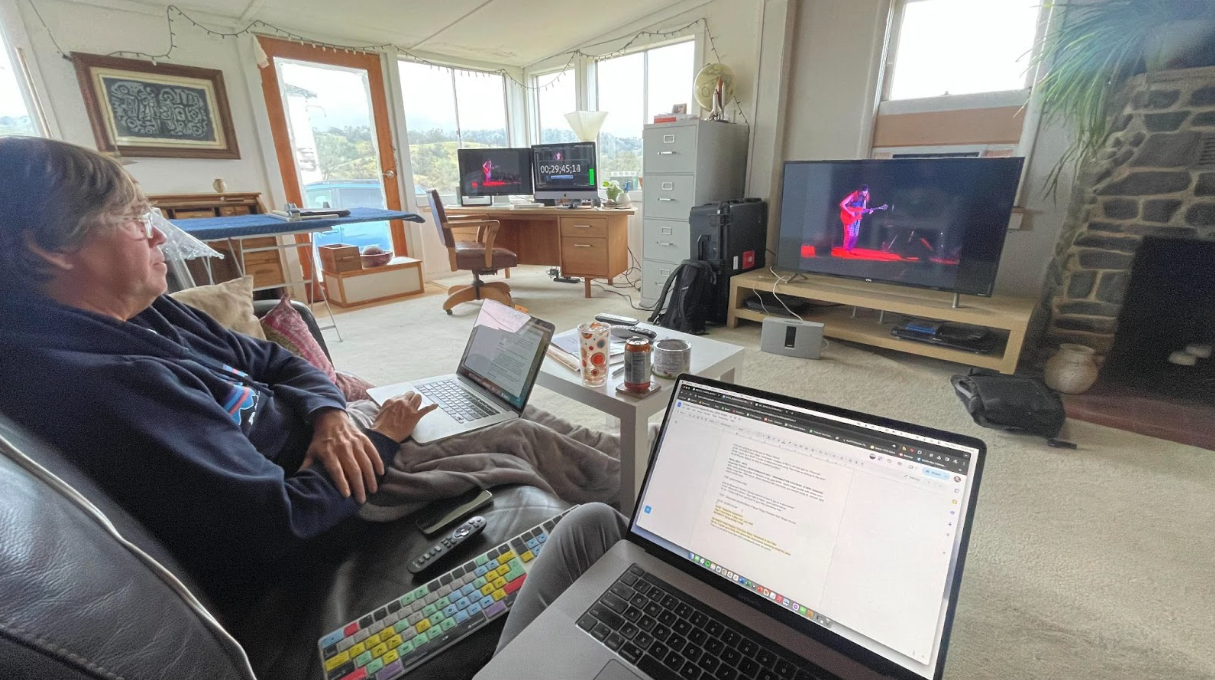
Reviewing Archive Footage
In February, Brendan and I reviewed more than 80 hours of raw performance footage and interviews with Michael, sent to us by production companies who filmed him on tour, from filmmaker Brian Malone, who filmed “The Artist’s Profile” – a 1998 documentary about Michael, and from Randy Lutge, who filmed dozens of Hedges shows in the early 1980s at the New Varsity Theater.
What does reviewing archive footage entail?
Watching each tape, start to finish, transcribing every word and song, making extensive notes, and tagging moments of the tape that can be used in particular segments of the film. It’s a big job!
We’d like to say a BIG thanks to Jake White, the biographer working on a book about Michael’s life, for helping to transcribe much of this material, saving us a lot of time and effort in this process.
We also recently sent more than 100 hours of home movies and 8mm film to be digitized and up-rezzed to high definition for possible use in the film. We’ll review that later this Spring/Summer between production dates.
We can’t wait to see what’s on these decades-old tapes, with their ancient labels written in Michael and Hilleary’s hand, mentioning ‘tour of studio construction,’ ‘backstage with Leo,’ ‘heading to the airport,’ etc.
This is truly a treat – looking at never-before-seen footage and envisioning how and where it can be used: in the film, for a concert VOD release, outtake, or future project.
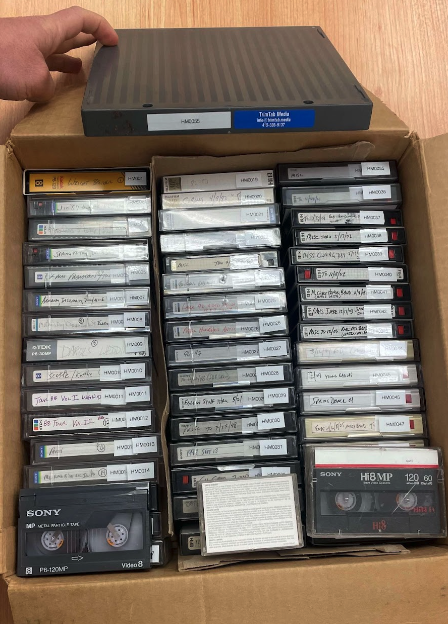
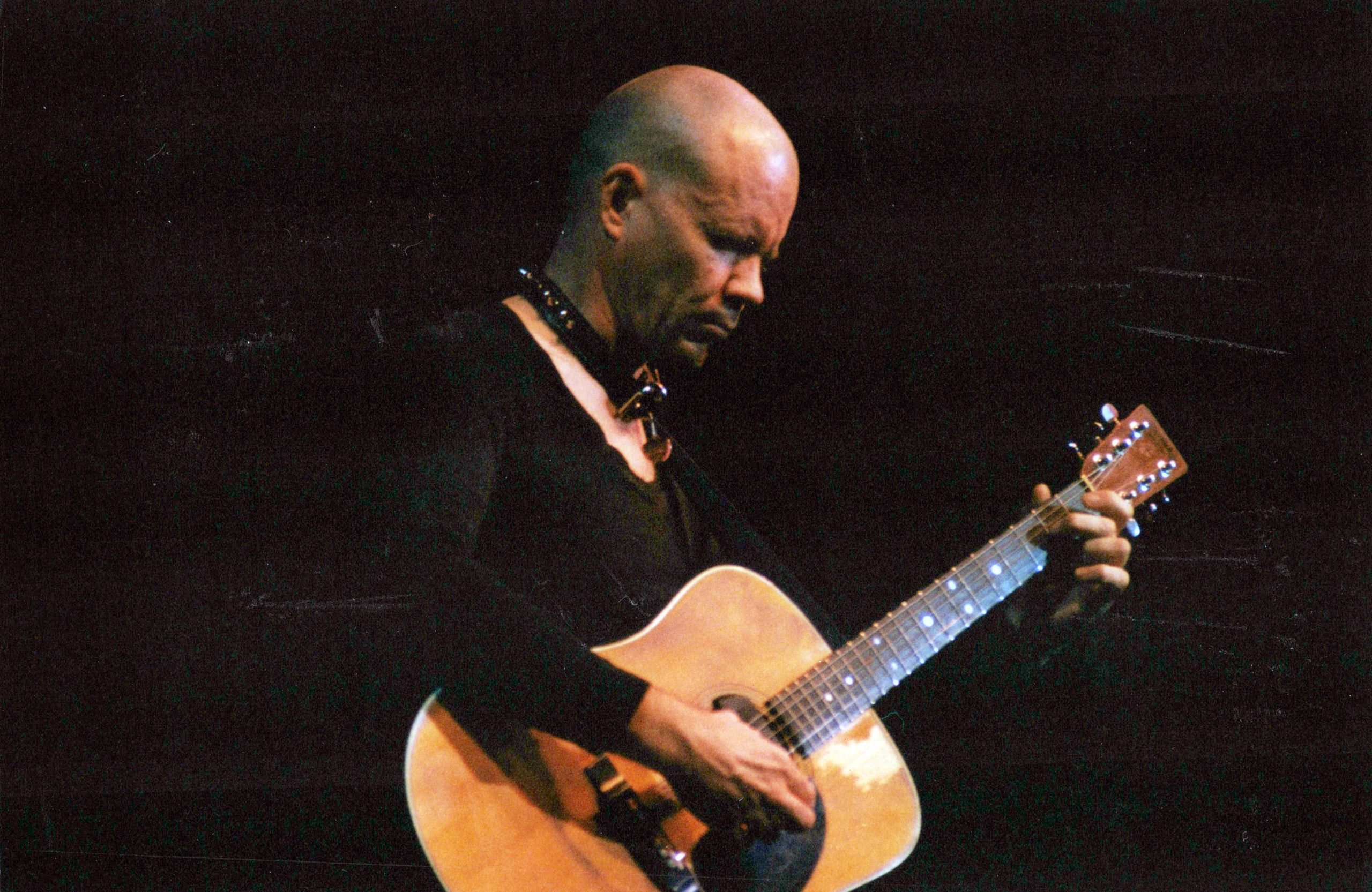
Aerial Boundaries and The Next Generation
Right now, we’re working on editing a “deep dive” scene about Aerial Boundaries, Michael’s signature song, or “it’s his anthem,” as described by one of our interviewees. After that, we’ll start editing a segment about “The Next Generation,” which explores Michael’s legacy and the growing community of guitarists and musicians inspired by Michael’s music.
While we submit more grant applications, schedule fundraising events & build pitches for funding, we’ll continue moving this film along – in the editing room!
Become a Sponsor
This film will be funded in part by Michael’s fans, angel donors, business sponsors and grant funding.
Sponsorship packages range from $1,000-$75,000 and include various benefits. They are tax-deductible through our fiscal sponsor, the Stropes Foundation.
Review our available sponsorship packages and let us know if you’re interested in becoming a sponsor of the film.
Or by check
Write a check to “Stropes Foundation, Inc” with “Oracle Documentary” in the memo and mail to:
Stropes Foundation, Inc.
1132 Lake Avenue
Racine, WI 53403
